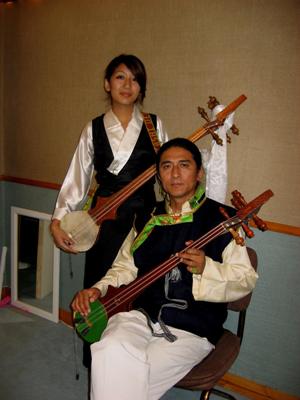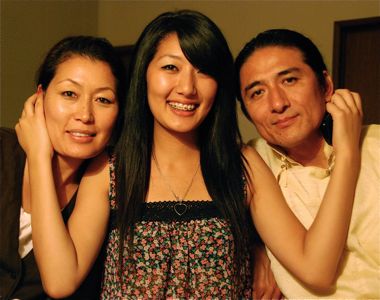Tashi Dhondup Sharzur
Tibetan folk and classical music
 Tibetan music is deeply rooted in the spiritual tradition of Tibetan Buddhism. For thousands of years, music and dance were used to offer reverance to local dieties who are considered the protectors of Tibetan’s environment. Through these traditions, musicians make connections to the spirit of nature and ask for support and protection. Until 1950, these traditional music forms lived only in communities in Tibet. After China’s occupation of Tibet, the rich traditions of Tibetan music, dance, and drama were supressed. In the early 1960’s, a group of master musicians went into exile in India and began slowly teaching these traditions to the younger generation. Tashi Dhondup Sharzur, aka Techung, was one of the students to learn from these exiled masters.
Tibetan music is deeply rooted in the spiritual tradition of Tibetan Buddhism. For thousands of years, music and dance were used to offer reverance to local dieties who are considered the protectors of Tibetan’s environment. Through these traditions, musicians make connections to the spirit of nature and ask for support and protection. Until 1950, these traditional music forms lived only in communities in Tibet. After China’s occupation of Tibet, the rich traditions of Tibetan music, dance, and drama were supressed. In the early 1960’s, a group of master musicians went into exile in India and began slowly teaching these traditions to the younger generation. Tashi Dhondup Sharzur, aka Techung, was one of the students to learn from these exiled masters.
As a young teenager in exile in Dharamsala, India, Techung learned the play the damnyen (a six-stringed lute used in Tibetan music) from the late Gen Lusta. In addition to the damnyen, Techung was instucted in Yul Shae (folk songs) and Tho Shae (light classical music from central Tibet). Techung has performed in India, the United States and Tibet as a soloist and educator, and is the co-founder of San Franicsco-based Chaksam-pa Tibetan Dance and Opera Company.
In 2009, Techung participated in ACTA’s Apprenticeship Program with his daughter Yangchen Lhamo. During their apprenticeship, instruction in Yul Shae singing offered Yangchen proper introduction to the damnyen, and instruction in Tho Shae singing trained Yangchen’s ability to strum and play the damnyen while singing.

